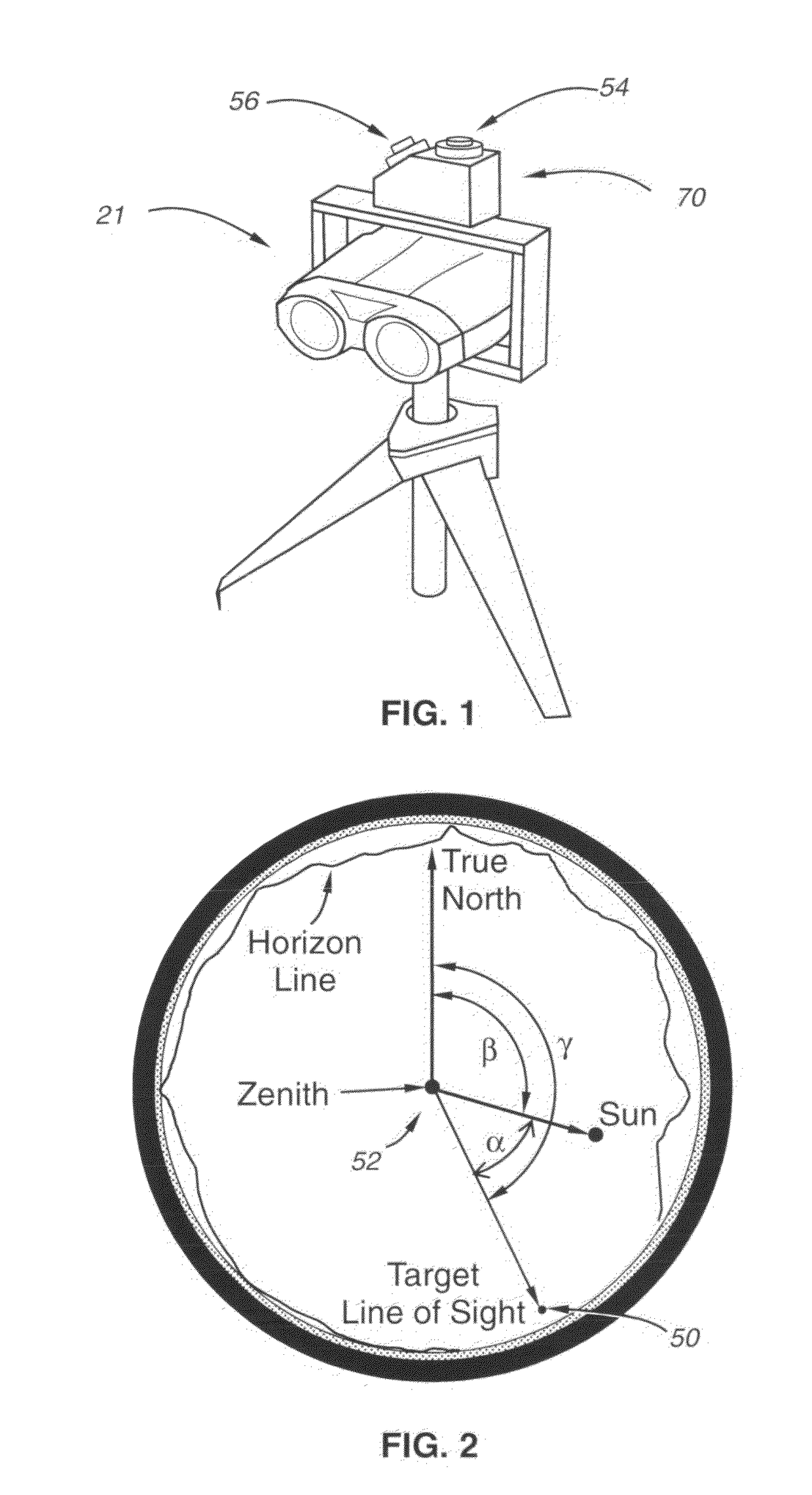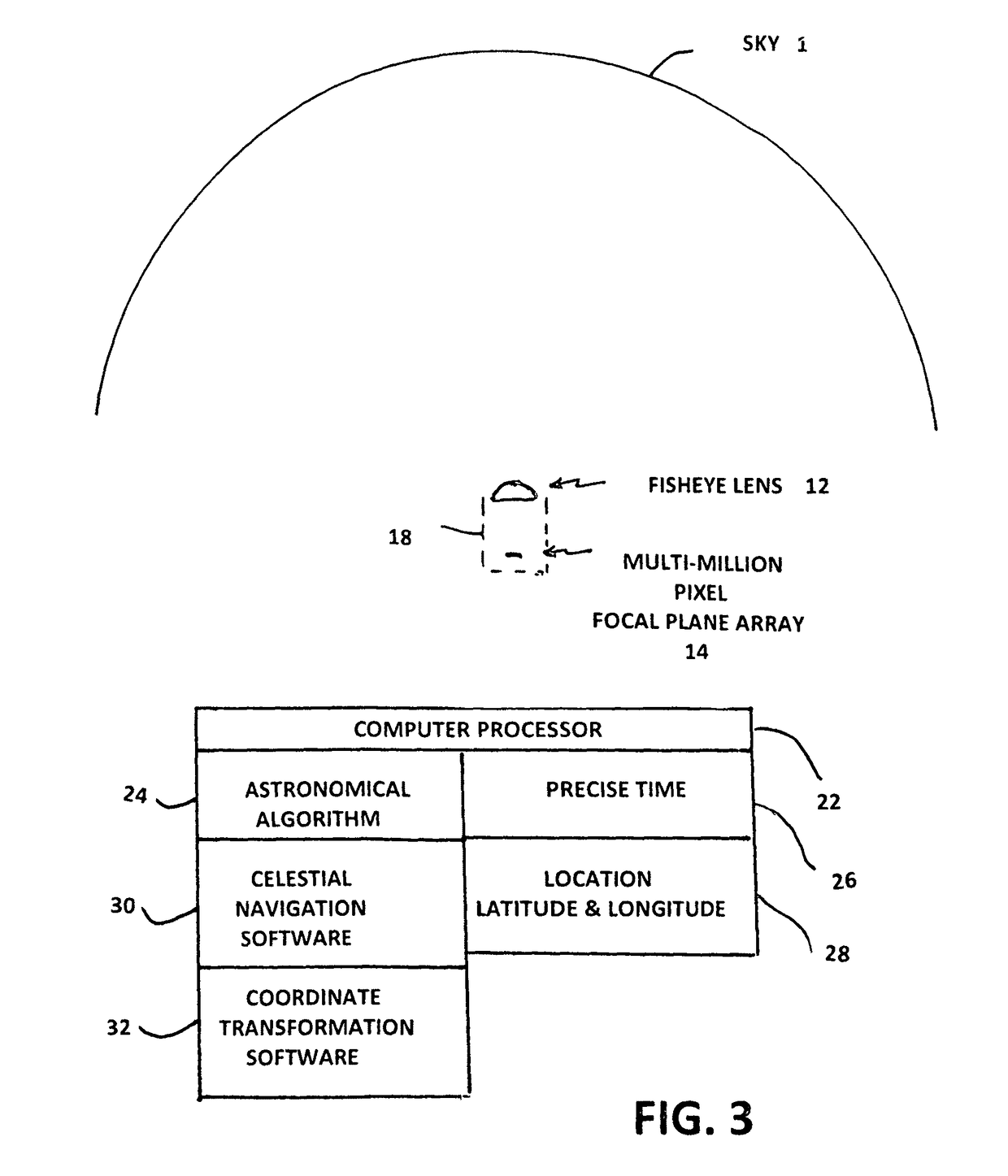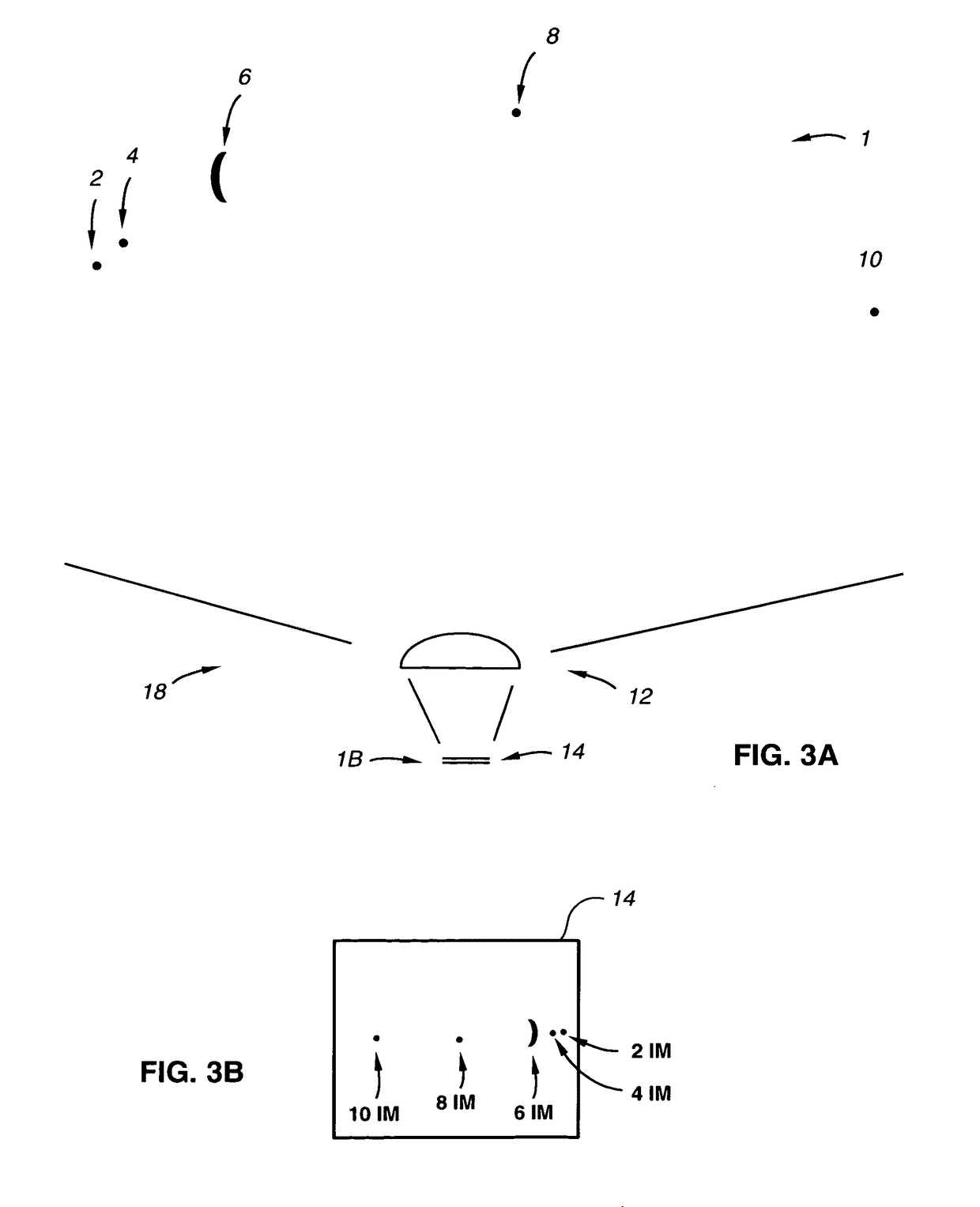Miniature celestial direction detection system
a detection system and celestial direction technology, applied in the direction of television system, distance measurement, instruments, etc., can solve the problems of reducing the accuracy of magnetic compasses to several degrees or rendering them useless, affecting the accuracy of target designators, and likely substantial position errors, etc., to achieve accurate target designators, eliminate movement and jitter of laser beams, and high degree of accuracy
- Summary
- Abstract
- Description
- Claims
- Application Information
AI Technical Summary
Benefits of technology
Problems solved by technology
Method used
Image
Examples
Embodiment Construction
[0031]A block diagram of a prototype of the present invention actually built and tested by Applicants is shown in FIG. 3. It is a celestial compass and includes a camera 18 having a fisheye lens 12 suitable for viewing almost an entire hemisphere of the sky and a 1.3-million pixel sensor 14 for collecting images of celestial objects such as stars, planets, the moon and the sun. The celestial compass also includes a computer 22 programmed with an astronomical algorithm for providing the precise position of celestial objects based on precise input of time (date and time of day, 26) and observation position (latitude and longitude, 28), celestial navigation software 30 and coordinate transformation software 32 for converting pixel image data into astronomical coordinates, and providing a true north reference.
The Camera
[0032]As shown in FIG. 3A about 170 degrees of a nighttime hemisphere 1 is viewed via a camera 18 with a fisheye lens 12 and a 1.3-million pixel senso...
PUM
 Login to View More
Login to View More Abstract
Description
Claims
Application Information
 Login to View More
Login to View More - R&D
- Intellectual Property
- Life Sciences
- Materials
- Tech Scout
- Unparalleled Data Quality
- Higher Quality Content
- 60% Fewer Hallucinations
Browse by: Latest US Patents, China's latest patents, Technical Efficacy Thesaurus, Application Domain, Technology Topic, Popular Technical Reports.
© 2025 PatSnap. All rights reserved.Legal|Privacy policy|Modern Slavery Act Transparency Statement|Sitemap|About US| Contact US: help@patsnap.com



